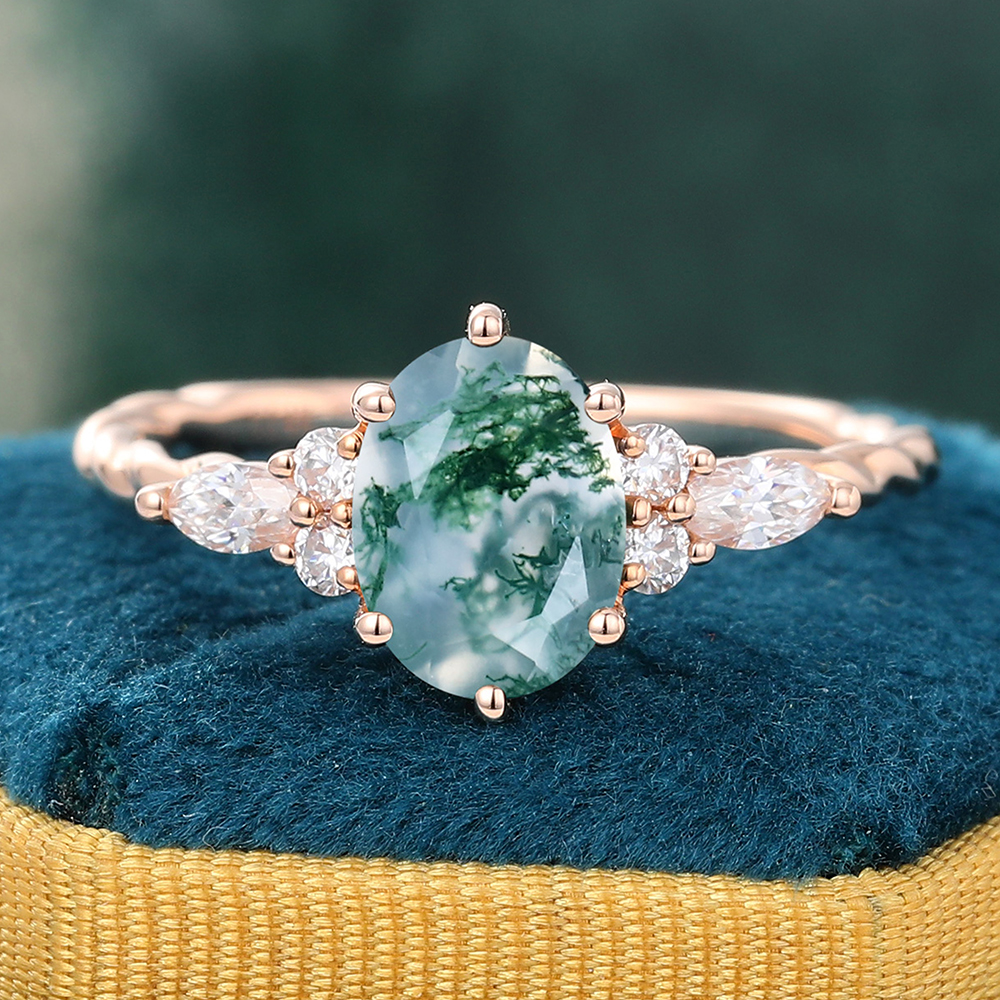How to Identify Moonstone - The Difference Between Real and Fake Moonstone
Jan 04,2024 | Juyoyo
Distinguishing between natural and fake moonstones requires specialized knowledge and experience. The disparities between natural moonstones and imitations can be identified through a series of characteristics and tests.
Firstly, let's understand moonstone: Moonstone, also known as lunar feldspar, is a variety of orthoclase feldspar with a unique phenomenon called "adularescence" or "Schiller effect," giving it the name moonstone. It exhibits a distinctive blue or white sheen when viewed under light, making it a popular choice in the jewelry industry for items such as rings and necklaces. Here are some key parameters for moonstone:
- Mineral: Feldspar
- Chemistry: KAlSi3O8
- Color: Colorless to White, Gray, Green, Peach, Brown
- Refractive index: 1.518 - 1.547
- Birefringence: 0.005 - 0.01
- Specific gravity: 2.54-2.66
- Mohs Hardness: 6.0 to 6.5
- Dispersion: 0.012
So, how to authenticate a moonstone? Prepare a high-magnification loupe and a focused flashlight. Below are some common distinguishing factors between natural and fake moonstones:
- Schiller Effect:
- Natural Moonstone: Displays a unique schiller effect, often referred to as a cat's eye effect, creating a bright line under light.
- Fake Moonstone: Some imitations may attempt to replicate this effect using optical brighteners but often fall short of the brilliance observed in authentic moonstones.
- Color:
- Natural Moonstone: Typically exhibits a blue or white sheen due to internal microfibers or structures.
- Fake Moonstone: Imitations might use dyes or other methods to replicate the moonstone's color, but these colors often appear artificial and lack natural brilliance.
- Transparency:
- Natural Moonstone: Generally transparent, although some may have slight opaqueness due to internal inclusions, which should not significantly impact overall brilliance.
- Fake Moonstone: May use opaque or semi-transparent materials, often concealing true physical characteristics through coloring or other means.
- Hardness:
- Natural Moonstone: Typically has a hardness of 6-7 on the Mohs scale, making it relatively hard. Genuine moonstone should not scratch easily under light pressure.
- Fake Moonstone: Imitations may use materials with varying hardness, and their behavior in hardness tests may deviate from that of natural moonstone.
- Fracture:
- Natural Moonstone: Exhibits distinct cleavage and uneven to shell-like fractures.
- Fake Moonstone: Displays smooth, curved surfaces at fracture points.
In summary, differentiating between natural moonstone and imitation requires a certain level of expertise and experience. The authentication process relies on distinct gemstone characteristics such as color, transparency, optical phenomena, hardness, specific gravity, dispersion, cleavage, fracture, birefringence, and special optical effects. Identification can be facilitated using simple tools like a magnifying glass with at least 10x magnification, a focused flashlight, etc. It is advisable to purchase from reputable jewelers or seek the expertise of professional gemologists when making a purchase.











